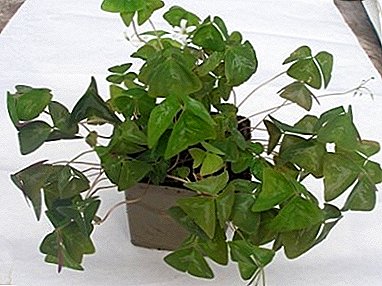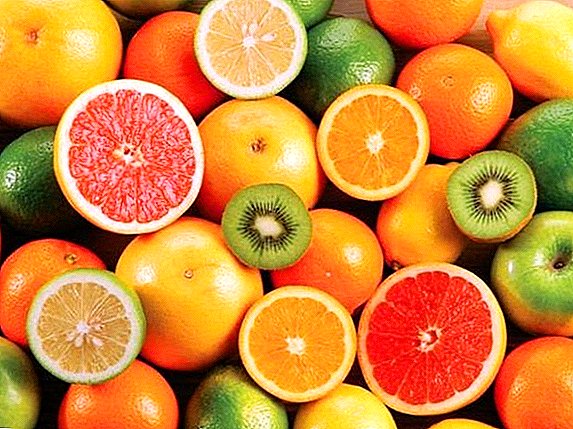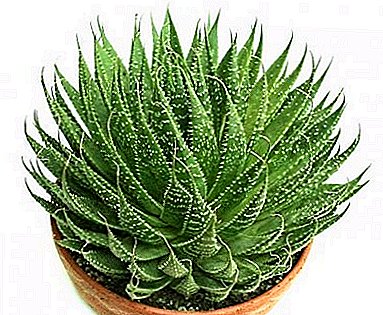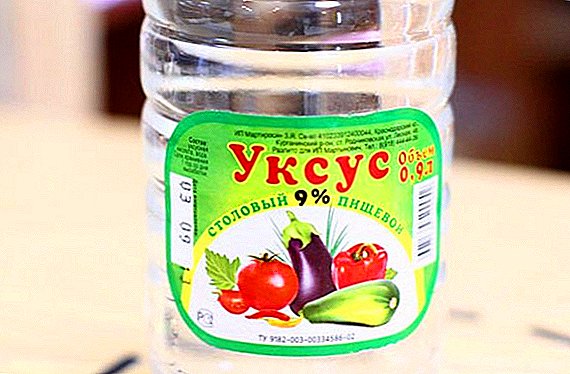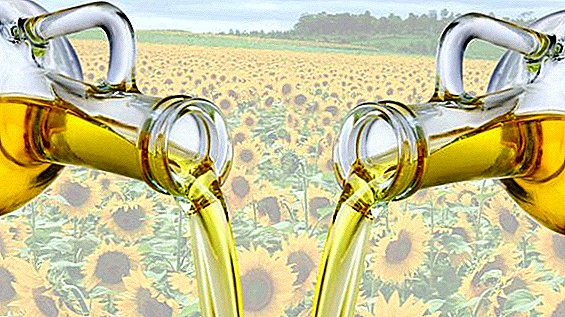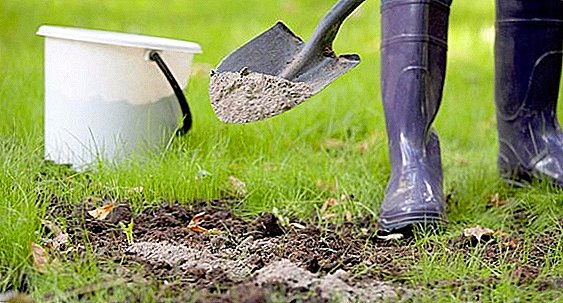 Since ancient times, people use wood ash as a fertilizer. Ash not only fertilizes, but also structures soil. The use of ash in horticulture simultaneously improves both the mechanical and chemical composition of the soil. Ash has properties to lower acidity, accelerate ripening of the compost and loosen the soil. The soil fertilized and alkalized by ash is a favorable environment for the vital activity of soil microorganisms, especially nitrogen-fixing bacteria.
Since ancient times, people use wood ash as a fertilizer. Ash not only fertilizes, but also structures soil. The use of ash in horticulture simultaneously improves both the mechanical and chemical composition of the soil. Ash has properties to lower acidity, accelerate ripening of the compost and loosen the soil. The soil fertilized and alkalized by ash is a favorable environment for the vital activity of soil microorganisms, especially nitrogen-fixing bacteria.
Important! Ash should be stored in a dry place. Moisture damages this fertilizer - it loses trace elements, potassium. If you pack the ashes in plastic bags that do not allow the penetration of moisture, it can be stored for up to several years. At the same time, ash retains its properties.
What is useful in ash
Wood ash as a fertilizer is used due to its beneficial chemical composition. It contains calcium, magnesium, sodium, potassium and other substances that are necessary for the development and growth of plants.
The chemical composition of the ash is different, as it depends on the burning plant, from which it is obtained. Potato tops, grapevines, meadow grass in their ashes contain 40% potassium. Hardwood ash has a different composition, with calcium in the lead. Conifers are rich in phosphorus - up to 7% in composition.
 The composition of the ash includes more than 70 elements and 30 trace elements. At the same time, it does not contain chlorine, which allows fertilizing crops that do not tolerate it. The only element that plants need and does not occur in the ashes is nitrogen. All elements in this natural fertilizer are contained in a form that is best suited for plant absorption.
The composition of the ash includes more than 70 elements and 30 trace elements. At the same time, it does not contain chlorine, which allows fertilizing crops that do not tolerate it. The only element that plants need and does not occur in the ashes is nitrogen. All elements in this natural fertilizer are contained in a form that is best suited for plant absorption.
On what soils can ash be used
Ashes can be applied on different soils. Due to its properties, it improves its quality, provided proper application.
 Ash has the ability to loosen that can be used for heavy clay soil. By bringing ash into the soil in the fall, you can make it more loose. The calculation of the amount is based on the acidity of the soil and plants that are expected to grow on it. For 1 m², 100 to 800 g of ash can be applied.
Ash has the ability to loosen that can be used for heavy clay soil. By bringing ash into the soil in the fall, you can make it more loose. The calculation of the amount is based on the acidity of the soil and plants that are expected to grow on it. For 1 m², 100 to 800 g of ash can be applied.
Light sandy soils are usually fertilized with ashes in the spring. This is done so that the nutrients do not go deep into the earth with melt water. The introduction of ash in sandy soils is particularly good for their quality.
Ash is used to neutralize acidic soils, enrich with its help marsh, marsh-podzolic and gray forest soils. Only in saline soil is not recommended to make ash.
Did you know? After combustion, different plants give different chemical composition of the ash. Potassium most often contains ash of grassy plants: sunflower stalks-up to 40% buckwheat-up to 35%, nettle - 32%, cereals-20%. Peat ash contains little potassium and phosphorus, but a lot of calcium. There is also a lot of calcium in ash from willow and poplar - up to 43%, and in birch - 30%.
What plants can be fertilized with ashes
For many plants, ash is a storehouse of substances necessary for proper growth.
Ash is used to fertilize trees, vegetables, flowers.
For what kind of vegetables is wood ash:
- potatoes;
- tomatoes, pepper, eggplant;
- cucumbers, squash, zucchini;
- onions, winter garlic;
- cabbage of different types;
- carrots, parsley, beets, radishes;
- peas, beans, dill, salad.
 In addition to fertilizing vegetables, ash for flowers is also a big benefit. Potted flowers often need to be enriched with minerals, which are sufficient in the ashes. You can fertilize with ashes and garden flowers - gladioli, asters, begonia, balsam.
In addition to fertilizing vegetables, ash for flowers is also a big benefit. Potted flowers often need to be enriched with minerals, which are sufficient in the ashes. You can fertilize with ashes and garden flowers - gladioli, asters, begonia, balsam.For trees, the elements of ash also bring many benefits. For the fertilization of trees, both dry ash and solutions with its content are used.
Did you know? The introduction of ash in the near-pole pillars and planting pits of cherries and plums favorably affects these plants. It is enough to do such top dressing once in 3-4 years. To deposit ash under the trees, grooves are made around the perimeter of the crown, in which the ash solution is poured or ash is poured. After that, the groove, which is about 10 cm deep, is covered with earth.
Ash application
Ash is a very effective fertilizer, but if you use it together with humus, compost, manure and peat, you can further increase its productivity. The benefits of this fertilizer can be extracted at different stages of plant life - in preparing the soil for planting, preparing seeds, planting plants, and feeding them.

Soil preparation
Before planting many plants, it is useful to bring ashes into the ground. During digging before planting potatoes make 1 cup of ash per 1 m². The same amount is required for cucumbers, squash, zucchini. To prepare the soil for tomatoes, peppers and eggplants make 3 cups of ash per 1 m².
Before planting cabbage for different varieties, you may need 1-2 glasses of ash per 1 m². Carrots, parsley beets and radishes on such an area require 1 cup of ash, as well as peas, beans, radishes, lettuce and dill.
For winter digging, before planting onions and winter garlic, add 1 cup of ash per m².
Seed preparation
Before sowing seeds of different plants, they can initially be processed with microelements. Such enrichment of seed substances produced before sowing peas, tomatoes, sweet peppers, carrots. This manipulation accelerates the ripening of the crop, increases it.
Before sowing, seeds are treated with ash for 12-24 hours. It is diluted in the amount of 20 g in 1 liter of warm water, insisted for 1-2 days, then the seeds are soaked in this solution for 6 hours.
Planting plants
 When planting plants can also use ashes. There are different methods for sprinkling ashes on seedlings. Ashes fall asleep in the wells before planting in the amount of 1-3 tbsp. spoons. When planting shrubs, you can use a glass of this fertilizer, and for trees and large bushes use 1-2 kg of ash in one hole.
When planting plants can also use ashes. There are different methods for sprinkling ashes on seedlings. Ashes fall asleep in the wells before planting in the amount of 1-3 tbsp. spoons. When planting shrubs, you can use a glass of this fertilizer, and for trees and large bushes use 1-2 kg of ash in one hole.
When planting plants, it is recommended to mix ashes with the soil, as this makes it possible to extend its effect to the future root system. Also, mixing ash and soil will prevent the plant from getting burned, possible by direct contact.
Plant nutrition
Growing and already developed plants are fed to make them better fruited. Top dressing can be made by ashes in a different look.
To feed strawberries with ash, you need to loosen the soil sprinkled with ash at the rate of 2 cups of ash per 1 m². In the second year of life of this plant, such feeding will be very useful. More popular solutions for feeding strawberries, which are used in different seasons.
 Potatoes are also fed with ashes - at the first hilling, 1-2 st. spoons ash. When the stage of budding begins, a second earthing up is performed, at which you can add half a cup of ash to each bush.
Potatoes are also fed with ashes - at the first hilling, 1-2 st. spoons ash. When the stage of budding begins, a second earthing up is performed, at which you can add half a cup of ash to each bush.
For spring dressing of garlic and onions with embedding in the soil make 1 glass of fertilizer per 1 m².
Ash is a good feeding for berries, vegetables, trees. For the latter, the impact of fertilizer lasts up to 4 years.
Important! Applying the ashes to feed plants, do not forget about your own health. It is necessary to comply with safety regulations requiring protection of eyes and respiratory organs from dust-like particles, which can easily penetrate there.
When ash cannot be used
Even organic fertilizers have contraindications. Soil ash should not be used in conjunction with bird droppings, manure (promotes nitrogen volatilization), superphosphate, nitrogen mineral fertilizers (provokes the release of ammonia and damages plants). Ash in alkaline soils with PH from 7 also does not apply.
Ash should be mixed with the soil and avoid direct contact with the roots of the plant. Due to the fact that the ash contains salts that are undesirable for young shoots, it is impossible to fertilize seedlings with it until at least 3 leaves appear.
 There are plants that prefer acidic soil - a fern, magnolia, camellia, azalea, hydrangea, blueberry, turnip, pumpkin, sorrel, beans and others. They should not be fertilized with ash, as it lowers the acidity of the soil.
There are plants that prefer acidic soil - a fern, magnolia, camellia, azalea, hydrangea, blueberry, turnip, pumpkin, sorrel, beans and others. They should not be fertilized with ash, as it lowers the acidity of the soil.
An excess of ash, which, in fact, is caustic alkali, can lead to the death of soil bacteria, earthworms and other beneficial representatives of the soil fauna. Restoration of a normal population in the ground is very slow and difficult, so do not abuse this fertilizer.
Ash from diseases and pests
To control pests used infusion of ash for spraying. The recipe for this is: pour 300 g of sifted ash with boiling water and boil for 20-30 minutes. The resulting decoction should be left to settle, then strain and add water to get 10 liters of infusion. In this infusion add 40-50 g of soap. The resulting infusion of ash is recommended to be used in dry weather in the evening. Its impact will help get rid of the apple tree-mottle, the Colorado potato beetle, the bud moth, the larva larvae and the moth.
In addition to spraying, you can dust the plants from pests. This procedure will be both the prevention and treatment of diseases and eliminates the larvae of the Colorado potato beetle, cruciferous flea.
Dry ash is used to scare away ants from the garden, snails and slugs.
The ash introduced into the soil has a beneficial effect on growing crops for years. Your garden plants will gratefully accept this fertilizer.





